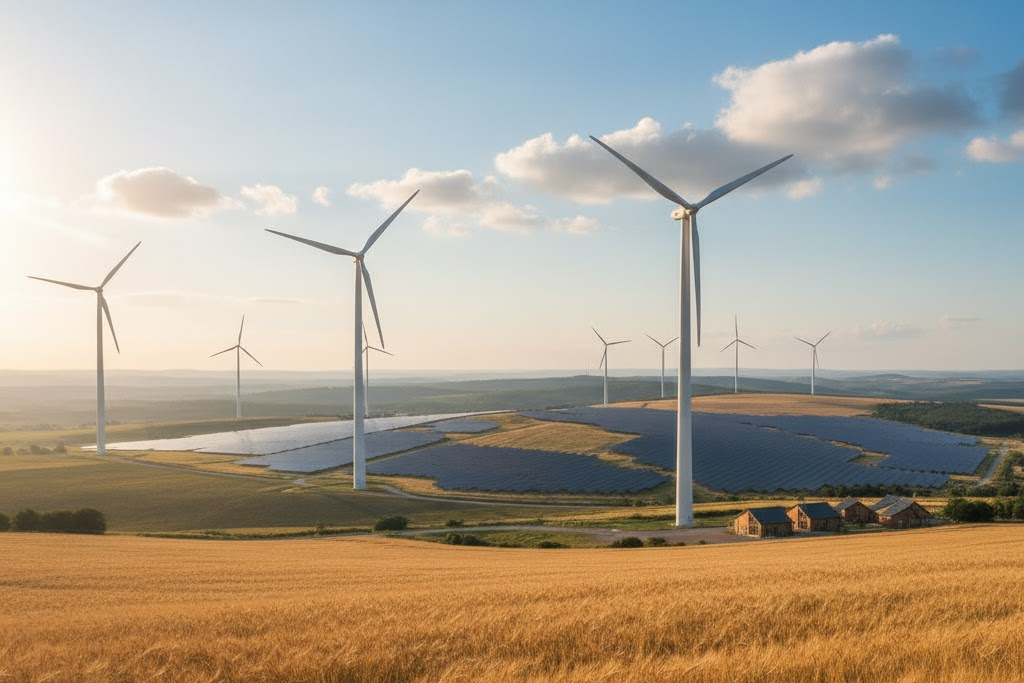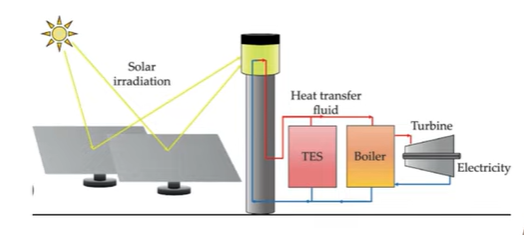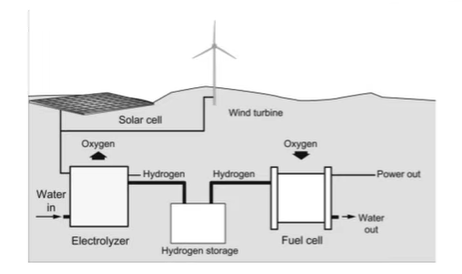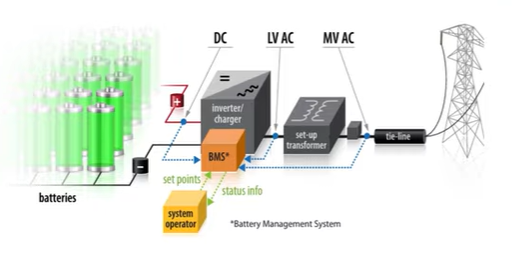
Top 5 Grid-Scale Energy Storage Technologies Explained
Top 5 Grid-Scale Energy Storage Technologies Explained https://www.theelectricalguy.in/wp-content/uploads/2025/11/maxresdefault-1-1024x576.jpg 1024 576 Gaurav Joshi Gaurav Joshi https://secure.gravatar.com/avatar/8d621b67d3005addbda23477c1259921ee1db2decf01a4f473bf0e5c76f3933a?s=96&d=mm&r=gIntegrating renewable energy into national power grids is becoming a global priority. Countries like India have set ambitious targets of 500 GW of renewable integration by 2030. Similarly, the United States, UK, and the European Union have set strong renewable energy goals.

By the end of 2023, over 170 countries had renewable energy integration targets in place. Solar and wind power are key players in this shift. However, these sources do not produce electricity all the time. The sun doesn’t shine at night, and the wind doesn’t always blow.
That’s where grid-scale energy storage comes in. It bridges the gap between renewable generation and demand, ensuring power reliability. In simple terms, it stores excess energy when production is high and releases it when production drops. Let’s explore the five main types of grid-scale energy storage technologies that are shaping the future of clean energy.
Table of Contents
- Pumped Hydro Storage
- Flywheel Storage
- Thermal Energy Storage
- Hydrogen Energy Storage
- Battery Energy Storage Systems (BESS)
- Comparison Summary of Grid-Scale Energy Storage Technologies
- Why Grid-Scale Energy Storage Matters
- Conclusion
Pumped Hydro Storage – A Proven Grid-Scale Energy Storage Technology
Pumped hydro storage is one of the oldest and most reliable forms of grid-scale energy storage. It works on a simple concept. When electricity generation is high, water is pumped from a lower reservoir to an upper reservoir. Later, when power demand rises, the stored water is released back down to spin turbines and generate electricity.

This technology has been around for decades and remains one of the most mature energy storage systems.
Advantages:
- It can store large amounts of energy for long periods.
- It has a long lifespan, often lasting over 50 years with minimal degradation.
- It is a proven and stable solution that supports grid reliability.
For example, India’s Tehri Hydro Station in Uttarakhand is a successful pumped hydro project providing steady storage and power generation.
However, pumped hydro storage has its challenges. It requires specific geography dams, rivers, and large water resources. Therefore, it cannot be built in cities or flat regions. The upfront investment is also high due to dam construction and civil engineering needs.
Despite these challenges, pumped hydro storage remains one of the most trusted and widely used energy storage systems globally.
Flywheel Storage – Fast and Efficient Energy Storage for Short Durations
Next comes flywheel energy storage, a unique and fast-responding technology. It stores energy in the form of rotational kinetic energy. When excess electricity is available, it spins a rotor at high speed. When power is needed, the rotor’s motion is slowed to convert the stored kinetic energy back into electricity.

Advantages of Flywheel Storage:
- Fast response time – It reacts quickly to changes in the grid.
- High efficiency – Energy losses during storage are minimal.
- Long cycle life – It can operate for many years without major degradation.
Because of its quick response, flywheel storage is ideal for frequency control and voltage balancing in power grids. It helps manage short-term fluctuations effectively.
However, flywheel systems can only store energy for short durations, typically from a few minutes to a few hours. They are not suitable for long-term or seasonal energy storage.
One practical example is the Stephentown Flywheel Plant in New York, USA. It provides rapid energy delivery for short periods, helping stabilize grid operations.
Flywheel storage is a great option for short-term storage needs, complementing other long-duration storage technologies.
Thermal Energy Storage – Cost-Effective and Solar-Compatible
Thermal energy storage captures and stores excess electricity as heat or cold. One of the most common methods is using molten salts. During the day, solar plants heat molten salt using excess electricity. This stored heat is then used to produce electricity during the night or cloudy periods.

Advantages:
- Cost-effective – Works well with existing solar power plants.
- Provides a reliable backup during non-sunny hours.
- Utilizes well-understood heating and cooling processes.
Despite its benefits, thermal energy storage has certain limits. It is location-dependent, requiring large open spaces and access to solar energy. It is also less flexible than other storage options, as its operation depends heavily on solar availability.
In short, thermal storage is ideal for regions with strong solar infrastructure but is not suitable everywhere. Still, it plays a vital role in storing solar power efficiently and extending energy availability into nighttime hours.
Hydrogen Energy Storage – Long-Term Solution for the Future
Hydrogen energy storage is an emerging technology with exciting potential. It stores energy by splitting water into hydrogen and oxygen using electrolysis. The hydrogen is then stored for later use. When electricity is needed, hydrogen is converted back into power through fuel cells or turbines.

Advantages of Hydrogen Energy Storage:
- Long-term storage – Energy can be stored for days, weeks, or even months.
- Suitable for seasonal storage, ideal for solar or wind-heavy regions.
- Enables clean and flexible power generation when combined with renewables.
However, hydrogen storage is still in its early stages. There are few large-scale projects running worldwide. The conversion efficiency from electricity to hydrogen and back remains low, making it less efficient than other technologies.
In India, companies like Adani are running pilot hydrogen projects in Gujarat. These projects aim to improve the technology and explore its full-scale potential.
With continued research, hydrogen energy storage could become a key player in achieving a renewable-powered future.
Battery Energy Storage Systems (BESS) – The Fastest Growing Technology
Among all technologies, battery energy storage systems (BESS) are growing the fastest. This system uses batteries to store electricity and discharge it when needed. It acts like a mini power plant inside a container.

Why is Battery Storage So Popular?
Because it combines flexibility, scalability, and high efficiency.
Key Advantages:
- Flexible Installation
Unlike pumped hydro or thermal storage, battery systems don’t need special geography. They can be set up anywhere in cities, deserts, or cold climates. - Scalable and Modular
Battery systems are built in containerized units. You can add more containers to increase capacity without major redesigns. This modularity makes scaling simple and cost-effective. - Fast Response Time
Batteries react quickly to grid demands. The Hornsdale Power Reserve in South Australia, for example, can respond in just 140 milliseconds. This speed is vital for frequency control and voltage balancing. - High Efficiency
Depending on the battery type, efficiency can reach 80–85%. Lithium-ion batteries offer the best performance, while lead-acid types have lower efficiency. - Falling Costs
Thanks to the growth of the electric vehicle industry, battery prices have dropped by over 70% in the last decade. As production continues to scale, costs will fall even further. - Versatile Applications
BESS can serve both short-term and long-term storage needs. It supports peak shaving, frequency regulation, capacity firming, and even reactive power control.
No other technology offers such a wide range of applications in one compact, adaptable, and scalable system. That’s why battery energy storage systems have become the preferred choice for modern grid-scale applications.
Today, utility companies, EPC contractors, and even private users are rapidly adopting battery storage solutions. The demand for professionals who understand BESS is also increasing worldwide.
If you want to learn about battery energy storage in a structured and simplified way, you can explore the dedicated course. It offers an in-depth understanding of BESS components, architecture, and operations, ideal for learners who want to master this rapidly growing technology.
Comparison Summary of Grid-Scale Energy Storage Technologies
To summarize the differences, here’s a quick comparison:
| Technology | Key Advantage | Limitation | Ideal Use |
| Pumped Hydro | Proven, long-lasting, large capacity | Location-specific, high cost | Long-term, high-capacity storage |
| Flywheel Storage | Quick response, high efficiency | Short duration only | Frequency and voltage control |
| Thermal Storage | Cost-effective with solar | Location-dependent, less flexible | Solar-based energy storage |
| Hydrogen Storage | Long-duration, clean storage | Low efficiency, early stage | Seasonal or long-term storage |
| Battery Storage | Flexible, scalable, fast response | Degradation over time | Versatile grid and off-grid uses |
Each technology has a distinct role. Together, they form the backbone of the future renewable energy ecosystem.
Why Grid-Scale Energy Storage Matters
Without energy storage, renewable energy cannot deliver a reliable power supply. The unpredictability of solar and wind makes it essential to have systems that can store excess power and release it on demand.
As countries move towards carbon neutrality, grid-scale energy storage will play a central role. It balances supply and demand, improves grid stability, and ensures consistent access to clean energy.
Technologies like battery storage and hydrogen energy storage are setting new benchmarks for energy reliability and flexibility.
Conclusion
The world is moving toward a clean energy future, but it cannot happen without grid-scale energy storage.
We explored five major technologies:
- Pumped hydro storage, reliable but location-limited.
- Flywheel storage, quick and efficient for short-term needs.
- Thermal energy storage, cost-effective but less flexible.
- Hydrogen energy storage, ideal for long-term use but still developing.
- Battery energy storage systems, the most flexible, scalable, and fast-growing solution today.
Each technology plays a critical role in helping nations depend more on renewable energy. To visualize how these technologies work and complement each other, watch the full video “Grid-Scale Energy Storage: 5 Technologies Explained” for a clearer understanding.
Keep watching, keep learning.

- Posted In:
- Power System
Gaurav Joshi
Gaurav, also known as TheElectricalGuy, is an accomplished electrical engineer with over 8 years of experience in the high and medium voltage switchgear industry. In addition to his professional endeavors, Gaurav has made significant contributions to the global electrical engineering community through his highly successful YouTube Channel. With over 195K subscribers and a prestigious silver play button from YouTube, he has become a trusted resource for electrical engineers worldwide. Gaurav's dedication to sharing knowledge extends to the creation of comprehensive courses, which have already attracted over 3000 students eager to enhance their skills in the field.
All stories by: Gaurav Joshi

